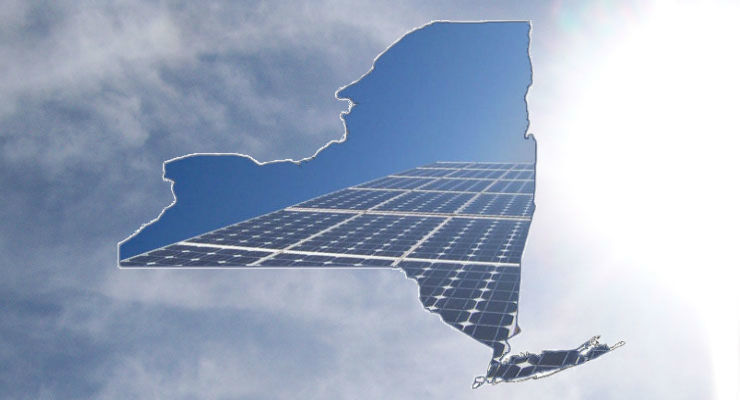
In 1979, President Jimmy Carter made a rousing speech coincided with his dedication of the solar panels on the White House roof. In that speech, Carter highlighted the goal of deriving 20 percent of all energy use in the United States from the sun by 2000. The precedent seemed to be set for not only a solar revolution, but a commitment to adjusting the American economy toward an inevitable path of sustainability. Despite the prescient sentiments of President Carter, President Reagan would be lured into the White House to strip those tree hugging solar panels off and revert back to good ole’ American values. Flash forward to today, and one begins to see the solar revolution coming back to the fore. This time, however, this solar revolution has more at stake – as a necessity.

With the advent of solar energy taking shape around the world, the United States has re-committed itself to rapid solar energy production. While the sun bathing states of California, Arizona, New Mexico, and others have attracted a majority of the spotlight when it comes to solar energy, New York has remained just as committed to rapid production of solar energy. Before this article goes on further, however, we must debunk the fallacy that only scolding sunshiny states are viable solar energy consumers.
If that were the case then there wouldn’t be any need for federal tax incentives for homeowners that install solar energy systems. There may even be state incentives in most states. Homeowners can take advantage of these incentives on their taxes. To sweeten this deal even more, a tax return is easy and free to file depending on your tax-filing platform of choice. Let’s go a little more in depth on the topic of solar energy.
From Solar State to Solar Nation
A quick look at Germany, the leading consumer of solar energy, and one finds that it’s not exactly the Death Valley of European sunshine. Germany continues to outpace all countries in solar energy and set a world record for solar power production with 37 gigawatts of installed solar capacity while achieving 28.5% of its domestic power demand from solar energy. Solar energy, as reflected in Germany’s example, is not hindered by fog or overcast days, in fact, it’s quite the contrary when it comes to a certain amount of fog (e.g. San Francisco).
So, for those pessimistic about solar energy in the state of New York, this should serve as a corollary to the potential impact solar energy has here, especially when taking into consideration that the state of New York receives annually more sunshine than Germany.
New York Governor Andrew Cuomo, despite prevaricating the fracking issue as long he is able, has committed to an unprecedented amount to solar energy for New York. In April, the Governor announced an additional commitment of $1 billion to the NY-Sun Initiative program dedicated to increasing solar energy throughout the state. Cuomo said, “Today we are making another long term investment in our clean energy economy-with nearly $100 million in funding that will dramatically increase our capacity to generate and utilize solar energy across the state.”
Solar energy’s benefits in New York aren’t limited to sustainability either. In a public debate that is flooded with assumptions that environmental initiatives are job killers, solar energy has proven those statements feeble at best. The expansion of solar energy has led to a rejuvenation of renewable energies in the economy, and in turn, enabled entrepreneurs to take advantage. Solar energy is cost effective, eliminates the externalities of other unsustainable energy sources, requires little maintenance, and the cost benefit outcome of solar makes the energy source uncanny to its competitors.
Rutgers University, for example, implemented an extravagant 32 acre solar canopy project costing over $40 million. The construction outcome was two-fold: First, it resulted in about $225,000 in electricity savings and $1.57 million in utility costs per year. And second, with the aid of state and federal government grants and incentives, the project enabled Rutgers to effectively have zero net cost. The Rutgers example illuminates the impact solar energy can have educationally, financially, and sustainably.
How has our Democracy Chronicles’ state of New York faired?
The Environment New York Research & Policy Center, a statewide non-profit dedicated to being the watchdog of government action on sustainability, released their 2014 report showing a 30% increase in solar energy in New York. The report goes on to emphasize that, “it is not the availability of sunlight that makes states solar leaders, but the degree to which state and local governments have created effective public policy to help capture virtually unlimited and pollution free energy from the sun.”
In addition, the progressive think tank Center for American Progress noted that prices for residential photovoltaic systems fell over 7%, and installation prices have “declined in major residential markets.”
Despite New York making significant progress, and putting itself on a path for omnipresent solar energy in the state, it doesn’t come without the consistent push of activists tapping into public fervor. As the Environment New York’s report echoes, it is public policy that has enabled for the advent of solar technology to take place with scientific research. However micro a project may seem, they are catalysts and instigators for the proliferation of future projects like it. Through projects and programs like the Sun Initiative, New York is quickly becoming a true solar state. Ensuring that reputation becomes a harbinger in the Unites States is essential to coming anywhere near President Obama’s lofty 2050 emission goals.
https://www.youtube.com/watch?v=J8HwVeSMuhE
Leave a Reply